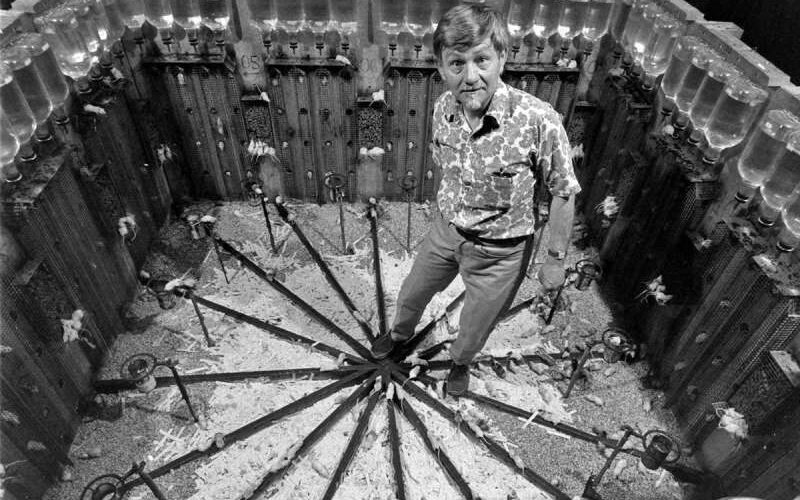In 1968, biologist John Calhoun initiated Universe 25, a groundbreaking series of experiments at Maryland’s National Institute of Mental Health. These meticulously crafted studies aimed to dissect mouse behavior and population dynamics, revealing the intricate relationship between population density and social dynamics. Such insights may hold relevance not only for understanding rodent societies but also for extrapolating potential implications for human civilizations.
Universe 25 took place in a meticulously designed mouse utopia—a spacious cube filled with abundant resources, including water, food, and nesting materials distributed across 256 compartments. Initially, the four mouse couples introduced to this environment quickly established territories and social hierarchies, leading to a rapid increase in population. Within just 19 months, the population swelled to 2,200 mice, facilitated by the abundance of resources, lack of disease, and absence of predators. This exponential growth underscored the favorable conditions within the utopia, propelling the once-sparse community into a thriving enclave teeming with life.
The initial prosperity of Universe 25 stemmed from a combination of factors, including ample provisions, a sanitary environment, and the absence of external threats, creating an ideal environment for breeding and social harmony. However, this ideal scenario deteriorated rapidly as the population swelled, leading to widespread social unrest due to overcrowding. Violence, cannibalism, and reproductive abnormalities surfaced as the mice vied for limited resources and space, despite their apparent abundance. Moreover, unusual sexual behaviors and instances of parental neglect or aggression toward offspring indicated profound distress within the community—an alarming phenomenon termed a “behavioral sink” by Calhoun (Wiles, 2011). This transformation underscored the intricate dynamics at play within Universe 25, highlighting the precarious balance between population density and social stability.
Both dominant and subordinate male mice displayed compulsive grooming behaviors and rendered females infertile, while dominant males claimed exclusive access to nesting sites, exacerbating overcrowding and fostering neglectful parental behaviors. Subordinate males, marginalized within society, resorted to self-soothing grooming rituals, forsaking reproductive activities due to pervasive social distress. Consequently, the ensuing atmosphere of chaos hindered the development of healthy social connections, leading female mice to withdraw into isolation and male counterparts to engage in ceaseless self-grooming activities. Ultimately, the once-thriving colony succumbed to its demise, devoid of any prospects for recovery (Kean, 2022). This portrayal of the breakdown in social order within Universe 25 underscores the profound impact of overcrowding and social distress on the intricate dynamics of rodent societies, offering valuable insights into the delicate balance between population density and social cohesion.
Calhoun drew parallels between his findings in Universe 25 and potential scenarios in human societies, cautioning against the dire repercussions—such as violence and social breakdown—that may arise when societal structures overshadow individual autonomy. Despite the prevailing gloom within Universe 25, glimpses of resilience emerged amid the chaos, with certain mice showcasing adaptability and creativity in navigating the challenges of overcrowded conditions. This resilience serves as a poignant testament to the innate human capacity to endure and innovate in the face of adversity (Wiles, 2011).
In essence, Universe 25 serves as a seminal investigation into the intricate interplay between population density and social behavior, unraveling the complex dynamics that underlie societal cohesion and discord. While the experiment offers sobering insights into the dangers of unbridled growth, it also highlights the resilience and resourcefulness that can emerge amidst adversity—a valuable lesson with far-reaching implications for both rodent and human societies alike.
References
Kean, S., 2022. Mouse Heaven or Mouse Hell? [online] Science History Institute. Available at: <https://sciencehistory.org/stories/magazine/mouse-heaven-or-mouse-hell/> [Accessed: 1 December 2023]. Wiles, W., 2011. THE BEHAVIORAL SINK. [online] Cabinet Magazine. Available at: <https://www.cabinetmagazine.org/issues/42/wiles.php> [Accessed: 1 December
